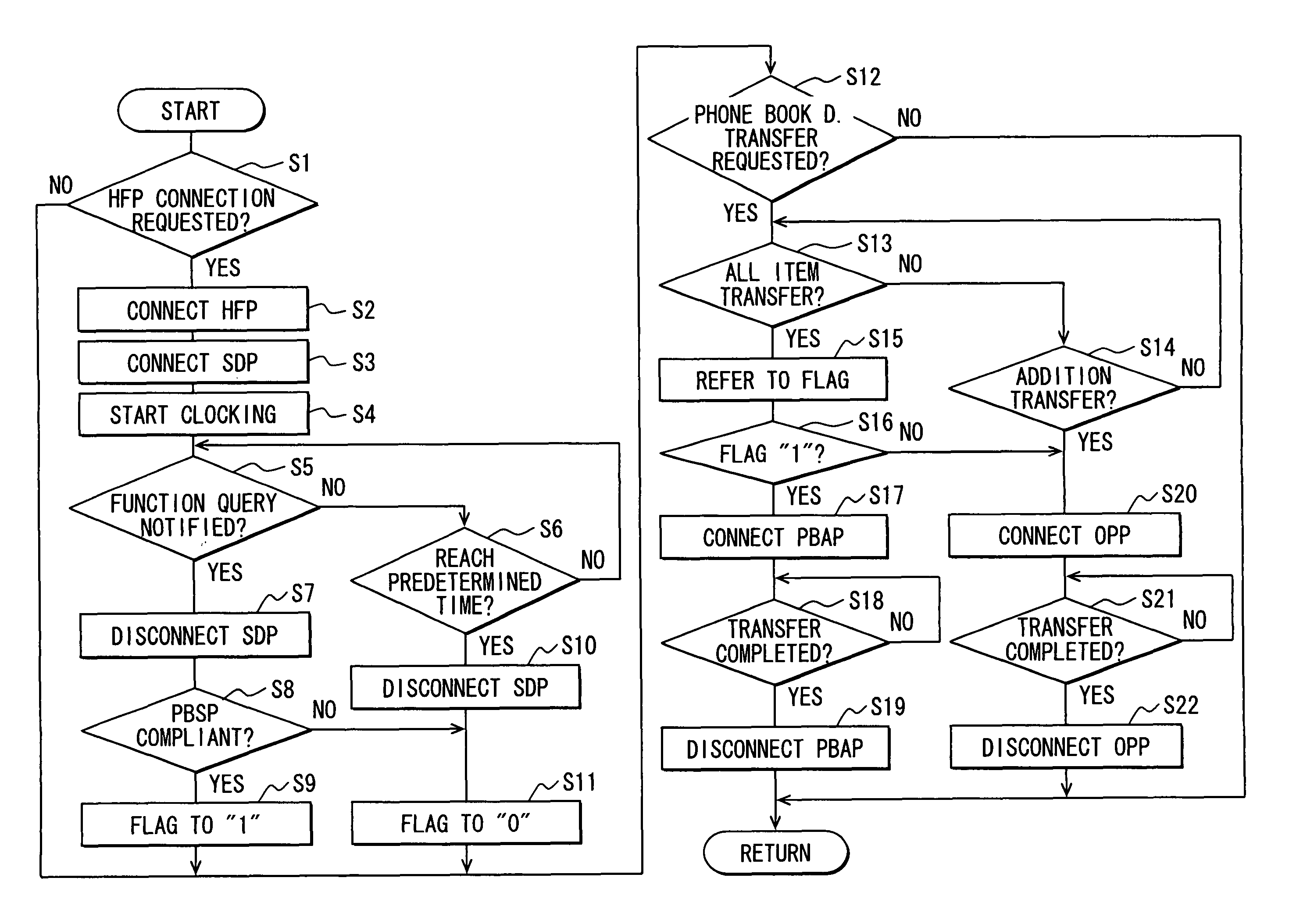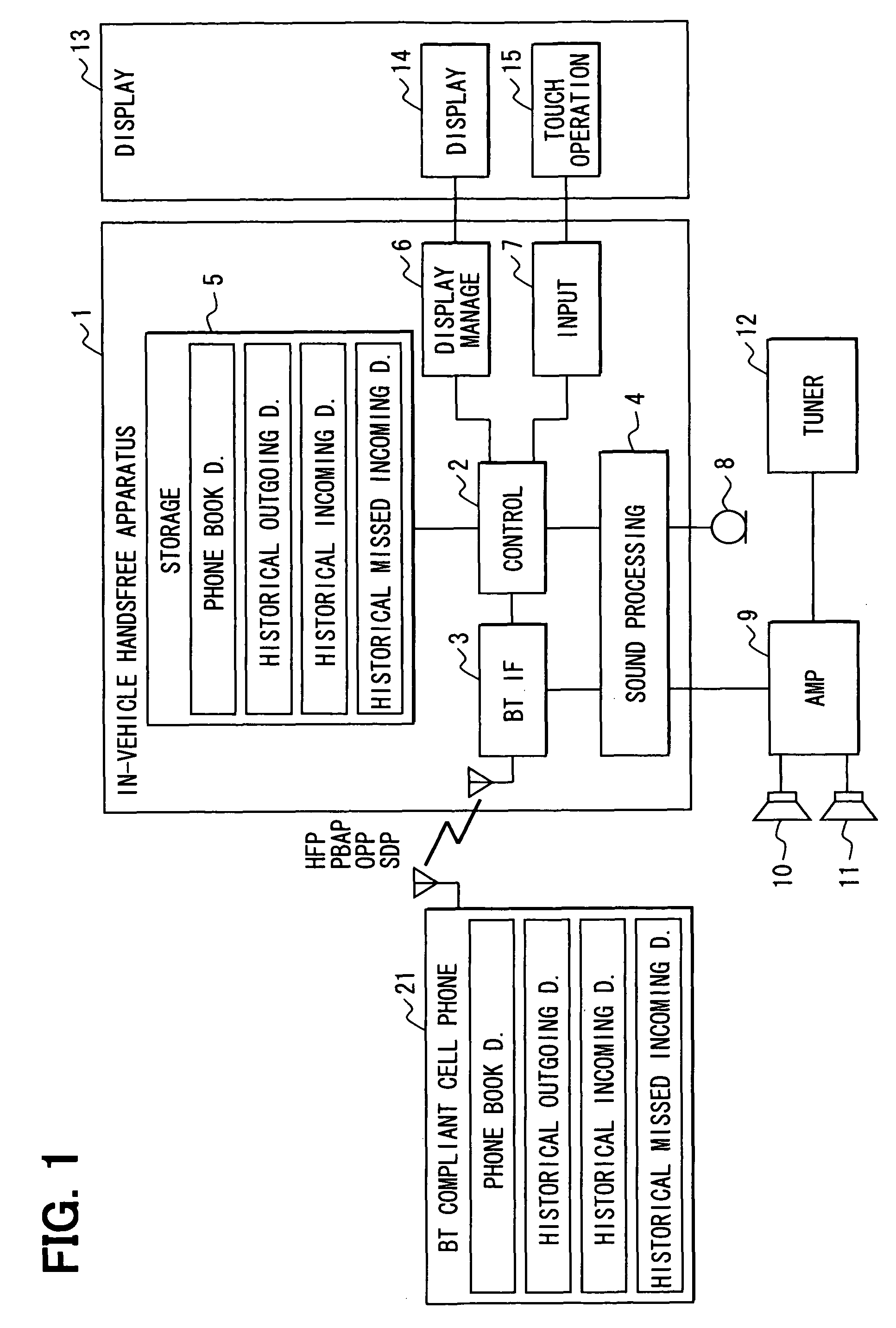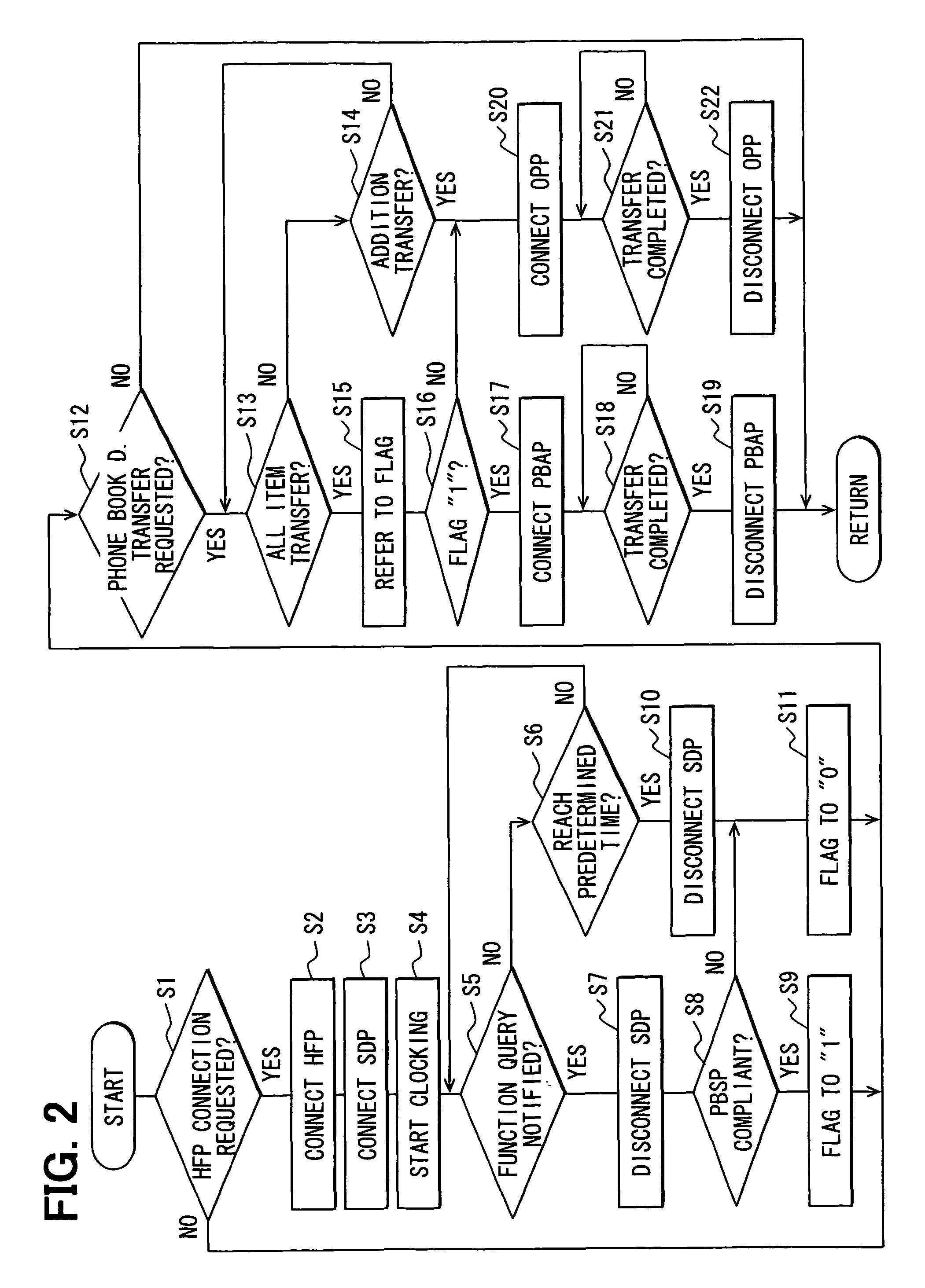In-vehicle handsfree apparatus
a technology for hands-free apparatus and vehicles, which is applied in electrical apparatus, substation equipment, radio transmission, etc., can solve the problems of reducing usability and failing to establish the connection of the apparatus with the pbap, and achieve the effect of enhancing usability
- Summary
- Abstract
- Description
- Claims
- Application Information
AI Technical Summary
Benefits of technology
Problems solved by technology
Method used
Image
Examples
first modification
[0044](First Modification)
[0045]In the above explanation, the control section 2 determines whether the response to the function query notified from the cellular phone 21 is a PBAP compliance notice. The control section 2 can determine whether the response to the function query notified from the cellular phone 21 is a PBAP non-compliance notice. In this case, as illustrated in FIG. 5, after disconnecting the SDP, which has been connected with the cellular phone 21, at S7, the control section 2 determines at S31 whether the response to the function query notified from the cellular phone 21 is a PBAP non-compliance notice.
[0046]When determining (“YES” at S31) that the response to the function query notified from the cellular phone 21 is a PBAP non-compliance notice, the control section 2 assigns the PBAP compliance flag with “0” at S32. In contrast, when determining (“NO” at S31) that the response to the function query notified from the cellular phone 21 is not a PBAP non-compliance no...
second modification
[0048](Second Modification)
[0049]In the above, it is assumed that the in-vehicle handsfree apparatus 1 can connect both (i) the HFP and (ii) either the PBAP or OPP, at the same time, with the cellular phone 21 (i.e., multi-profile connection is possible). When it is impossible to carry out concurrent connection of (i) HFP and (ii) the PBAP or OPP between the cellular phone 21 and the in-vehicle handsfree apparatus 1, the control section 2 determines that the PBAP compliance flag is assigned with “1” (“YES” at S16) and the HFP, which has been connected with the cellular phone 21, is once disconnected at S41 as illustrated in FIGS. 6 and 7. The PBAP is then connected with the cellular phones 21 with which the HFP is once disconnected, at S17. When the control section 2 determines that the data transfer of the phone book data from the cellular phone 21 to the in-vehicle handsfree apparatus 1 is completed (“YES” at S16), the PBAP which has been connected with the cellular-phone 21 is di...
third modification
[0051](Third Modification)
[0052]Moreover, as illustrated in FIG. 8, 513, S14 may be eliminated in FIG. 2. That is, after the control section 2 assigns the PBAP compliance flag with “1” at S9 or “0” at S11, the control section 2 determines at S12 whether a transfer request of the phone book data occurs. Subsequently, when determining that the user performs an operation to the transfer switch 16a in FIG. 4A, the control section 2 determines (“YES” at S12) that the transfer request of the phone book data occurs. Then, in the present modification, while passing through S13 or S15, the processing directly proceeds to S15, where the control section 2 refers to the PBAP compliance flag presently designated. The following processing is identical to the explanation in the FIG. 2. This elimination of S13 and S14 can be applied to the flowchart of FIGS. 5, 6, 7, similarly.
PUM
 Login to View More
Login to View More Abstract
Description
Claims
Application Information
 Login to View More
Login to View More - R&D
- Intellectual Property
- Life Sciences
- Materials
- Tech Scout
- Unparalleled Data Quality
- Higher Quality Content
- 60% Fewer Hallucinations
Browse by: Latest US Patents, China's latest patents, Technical Efficacy Thesaurus, Application Domain, Technology Topic, Popular Technical Reports.
© 2025 PatSnap. All rights reserved.Legal|Privacy policy|Modern Slavery Act Transparency Statement|Sitemap|About US| Contact US: help@patsnap.com



